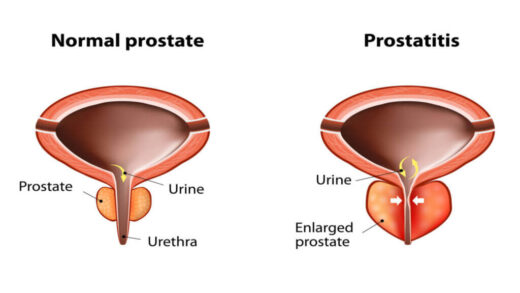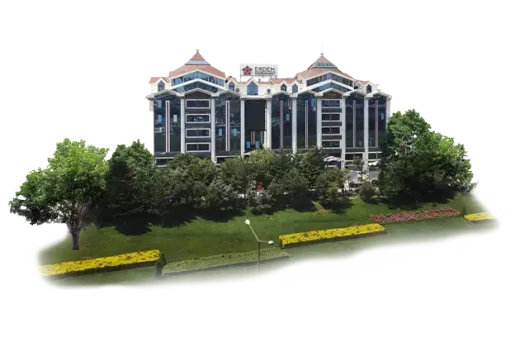A prostatectomy is a surgical procedure for the partial or complete removal of the prostate gland. It is most commonly performed to treat prostate cancer or benign prostatic hyperplasia (BPH), a non-cancerous enlargement of the prostate. This procedure is critical for men suffering from prostate conditions that do not respond to less invasive treatments. In this article, we will explore the various types of prostatectomy, indications, surgical techniques, potential complications, recovery process, and long-term outcomes.

Anatomy and Function of the Prostate Gland
The prostate is a small, walnut-sized gland located below the bladder and in front of the rectum in males. It surrounds the urethra the tube that carries urine from the bladder out through the penis. The main function of the prostate is to produce seminal fluid, which nourishes and transports sperm during ejaculation. Due to its anatomical position, any changes in the size or structure of the prostate can significantly affect urinary and sexual function.
Indications for Prostatectomy
The two primary indications for prostatectomy are:
- Prostate Cancer: One of the most common cancers in men, prostate cancer may require surgical removal of the prostate, especially when the disease is localized and has not spread to other parts of the body.
- Benign Prostatic Hyperplasia (BPH): A non-cancerous enlargement of the prostate that can cause significant urinary symptoms, such as difficulty urinating, weak stream, or frequent urination, particularly at night.
Other, less common indications include chronic prostatitis (inflammation of the prostate) and bladder obstruction not relieved by medication.
Types of Prostatectomy
a. Radical Prostatectomy
This is the most common type of prostatectomy performed for prostate cancer. It involves the complete removal of the prostate gland along with some surrounding tissue, including the seminal vesicles.
- Retropubic Radical Prostatectomy: The surgeon accesses the prostate through an incision in the lower abdomen.
- Perineal Radical Prostatectomy: The prostate is removed through an incision made between the scrotum and the anus. This approach is less common but may be used in specific cases.
- Laparoscopic or Robotic-Assisted Radical Prostatectomy: These minimally invasive techniques use small incisions and specialized instruments, often controlled robotically, to perform the surgery. Robotic-assisted surgery has become the preferred method in many institutions due to its precision and shorter recovery time.
b. Simple Prostatectomy
This procedure is usually performed for BPH rather than cancer. It involves removing only the inner part of the prostate that is blocking urine flow, leaving the outer part intact. It can be performed via open surgery or laparoscopically.
Preoperative Evaluation
Before undergoing a prostatectomy, patients typically undergo several tests, including:
- PSA (Prostate-Specific Antigen) blood test
- Digital rectal exam (DRE)
- Prostate biopsy (if cancer is suspected)
- Imaging tests such as MRI or CT scans to determine the extent of the disease
The patient’s overall health is also evaluated to ensure they are fit for surgery.
Surgical Procedure
During a prostatectomy, the patient is placed under general anesthesia. The procedure may take several hours, depending on the type and complexity of the surgery. In a radical prostatectomy, the prostate gland and surrounding tissues are carefully dissected and removed, and the urethra is reconnected to the bladder to restore urinary function. A catheter is usually placed to drain urine during the initial healing period.
Postoperative Care and Recovery
Recovery time varies based on the surgical technique used and the patient’s overall health. Generally:
- Hospital Stay: Patients may stay in the hospital for 1–3 days following the procedure.
- Catheter: The urinary catheter is typically left in place for 1–2 weeks.
- Pain Management: Pain is managed with medications, and robotic procedures often result in less postoperative pain.
- Activity Restrictions: Patients are advised to avoid heavy lifting and strenuous activities for several weeks.
Most patients can resume normal activities, including work, within 4 to 6 weeks after surgery, although complete recovery may take longer.
Complications and Side Effects
As with any surgery, prostatectomy carries some risks:
- Urinary Incontinence: One of the most common complications. It may be temporary or, in some cases, persistent.
- Erectile Dysfunction: Nerve damage during surgery can affect the ability to achieve or maintain an erection. Nerve-sparing techniques aim to minimize this risk.
- Bleeding and Infection: These are general risks associated with any surgery.
- Bladder Neck Contracture: Scar tissue can form where the bladder and urethra are joined, causing urinary obstruction.
- Lymphocele: Accumulation of lymphatic fluid if lymph nodes are removed during cancer surgery.
Long-Term Outcomes
Long-term outcomes of prostatectomy depend on the underlying condition being treated.
- Cancer Control: For patients with localized prostate cancer, radical prostatectomy offers excellent long-term cancer control. PSA levels are monitored postoperatively to detect recurrence.
- Symptom Relief for BPH: Simple prostatectomy significantly improves urinary symptoms and quality of life for men with BPH.
Sexual and urinary functions may take time to return and may not fully recover, especially in older patients or those with pre-existing issues.
Alternatives to Prostatectomy
Depending on the severity and nature of the condition, alternatives may include:
- Watchful Waiting or Active Surveillance for low-risk prostate cancer
- Medications such as alpha-blockers or 5-alpha-reductase inhibitors for BPH
- Minimally invasive procedures such as transurethral resection of the prostate (TURP), laser therapy, or UroLift for BPH
- Radiation therapy or hormone therapy for prostate cancer
Each alternative has its own risks and benefits, and the choice depends on patient preferences, health status, and the specifics of the disease.
Why Erdem Hospital is the Best Choice for Prostatectomy

When it comes to prostatectomy, precision, experience, and patient-centered care are paramount. Erdem Hospital stands out as a leading institution, offering cutting-edge surgical techniques, including robot-assisted prostatectomy, performed by highly skilled urologists. With a strong focus on minimally invasive methods, Erdem ensures faster recovery, reduced complications, and excellent long-term outcomes.
Patients at Erdem benefit from personalized care plans, state-of-the-art technology, and a compassionate medical team dedicated to delivering the highest standards in prostate health. Whether treating prostate cancer or benign prostatic hyperplasia (BPH), Erdem Hospital is the trusted name for safe, effective, and expert prostate surgery.
Choose Erdem Hospital where advanced care meets patient comfort.
Conclusion
Prostatectomy is a significant surgical procedure that offers relief from symptoms of BPH and can be curative in cases of localized prostate cancer. Advances in surgical techniques, particularly robotic-assisted surgery, have improved outcomes and reduced recovery times. However, the procedure is not without risks, and patients should be thoroughly informed about potential side effects and alternatives. A multidisciplinary approach involving urologists, oncologists, and primary care physicians ensures the best outcomes and supports patients through their treatment journey.